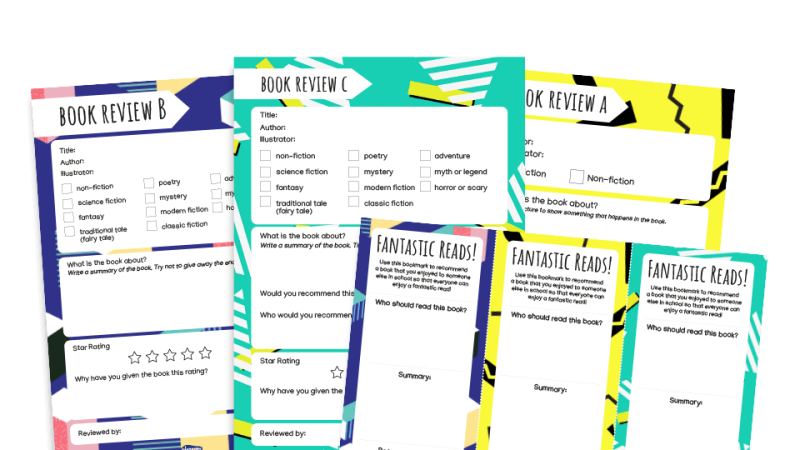8 primary lesson plans that boost both writing skills and emotional literacy

Help children discover more about themselves by exploring the thoughts and feelings of memorable book characters

- by Teachwire

Using children’s books to unpick the techniques of great authors is certain to improve children’s literacy and writing skills. But beyond this it develops emotional literacy, too.
Children can encounter situations that might mirror their own experiences at a safe distance, allowing them to talk about difficult subjects without reference to their own lives.
Or, through the eyes of a character, they can learn to see things from another’s point of view, understanding the emotions of both bully and victim, the confident and fretful. All of the following books deal with deep themes and emotional challenges that will be familiar in some way to all the children in your class. And the accompany book topics will give you plenty of starting points for how to explore these ideas within the context of the curriculum.
1. Use Harry Potter to discuss anger and prejudice
 Activities in this KS2 guide to Harry Potter and the Order of the Phoenix focus on analysing character traits and improving close reading of text. Talking points, meanwhile, address big themes and emotions, such as anger, power and prejudice. How has anger helped and hindered Harry in this book and throughout the series? And how does the theme of prejudice appear in the first five books?
Activities in this KS2 guide to Harry Potter and the Order of the Phoenix focus on analysing character traits and improving close reading of text. Talking points, meanwhile, address big themes and emotions, such as anger, power and prejudice. How has anger helped and hindered Harry in this book and throughout the series? And how does the theme of prejudice appear in the first five books?
Get the book topic here
2. Combine persuasive writing with understanding emotion  Ignored, stereotyped and diminished, if the crayons in your classroom could talk, they might object to their treatment. Understanding why leads to great lesson activities, such as looking at emotion cards, getting creative with colours and dramatising feelings. Get the book topic here
Ignored, stereotyped and diminished, if the crayons in your classroom could talk, they might object to their treatment. Understanding why leads to great lesson activities, such as looking at emotion cards, getting creative with colours and dramatising feelings. Get the book topic here
3. Help children explore their fears
 This award-winning book from Levi Pinfold Lets Pupils Explore Their Fears From A Safe Space. Role-play the characters to discover what frightens them, collect data and create graphs on what scares your class the most, then present the findings as statistics or in a story (or both). Look into the distinctive tempera method of the artwork, and delve into the folklore of the black dog.
Get the book topic here
This award-winning book from Levi Pinfold Lets Pupils Explore Their Fears From A Safe Space. Role-play the characters to discover what frightens them, collect data and create graphs on what scares your class the most, then present the findings as statistics or in a story (or both). Look into the distinctive tempera method of the artwork, and delve into the folklore of the black dog.
Get the book topic here
4. Raise pupils’ self esteem
 A talent for tap dancing, an adventurous spirit and the ability to inspire reading and writing – introduce your KS1 pupils to Speckle, a very special spider indeed (even if not everyone else sees him that way!). Look at alliteration, hold a class talent show and follow Speckle’s journey for worldwide fame through numerous countries.
Get the book topic here
A talent for tap dancing, an adventurous spirit and the ability to inspire reading and writing – introduce your KS1 pupils to Speckle, a very special spider indeed (even if not everyone else sees him that way!). Look at alliteration, hold a class talent show and follow Speckle’s journey for worldwide fame through numerous countries.
Get the book topic here
5. Write emotive pieces on bullying and friendship
 The central themes of bullying, friendship and difference are not so unusual, but the remarkable use of poetic forms, perfectly matched to the mood of each story section, has a profound effect. Readers experience the narrator’s perspective in a sensory way that is hard to imagine being achieved in any other form. Christine Chen and Lindsay Pickton’s book topic helps students write emotive pieces using inspiration from the clouds. Haikus, limericks, alliteration and more are all covered.
Get the book topic here
The central themes of bullying, friendship and difference are not so unusual, but the remarkable use of poetic forms, perfectly matched to the mood of each story section, has a profound effect. Readers experience the narrator’s perspective in a sensory way that is hard to imagine being achieved in any other form. Christine Chen and Lindsay Pickton’s book topic helps students write emotive pieces using inspiration from the clouds. Haikus, limericks, alliteration and more are all covered.
Get the book topic here
6. Learn the value of friendship
 Climb aboard the giant peach for a book topic that teaches Key Stage 2 students about the importance of friendship through a range of activities. Then look into the science of the story using an actual piece of fruit.
Get the book topic here
Climb aboard the giant peach for a book topic that teaches Key Stage 2 students about the importance of friendship through a range of activities. Then look into the science of the story using an actual piece of fruit.
Get the book topic here
7. Talk about coping with loss
 The story of Amanda and her imaginary friend Rudger starts to go wrong when the evil Mr Bunting and his imaginary accomplice find them. Mr Bunting needs to feast on imaginaries to keep himself alive, and he plans to eat Rudger if he can catch him. Sue Cowley’s book topic covers memory, growing up, den building, creating tension in illustrations and the power of our imaginations for good and bad.
Get the book topic here
The story of Amanda and her imaginary friend Rudger starts to go wrong when the evil Mr Bunting and his imaginary accomplice find them. Mr Bunting needs to feast on imaginaries to keep himself alive, and he plans to eat Rudger if he can catch him. Sue Cowley’s book topic covers memory, growing up, den building, creating tension in illustrations and the power of our imaginations for good and bad.
Get the book topic here
8. Be OK with not fitting in
 A good picture book can go straight to children’s hearts, encouraging reflection, stimulating discussion and creating fertile ground for the kind of activities that broaden and deepen their experience of the story. Weslandia (Walker Books, 2007) is such a book. It’s main character, Wesley, is a boy who doesn’t fit in with his peers. But that doesn’t matter to him…
Get the book topic here
A good picture book can go straight to children’s hearts, encouraging reflection, stimulating discussion and creating fertile ground for the kind of activities that broaden and deepen their experience of the story. Weslandia (Walker Books, 2007) is such a book. It’s main character, Wesley, is a boy who doesn’t fit in with his peers. But that doesn’t matter to him…
Get the book topic here











